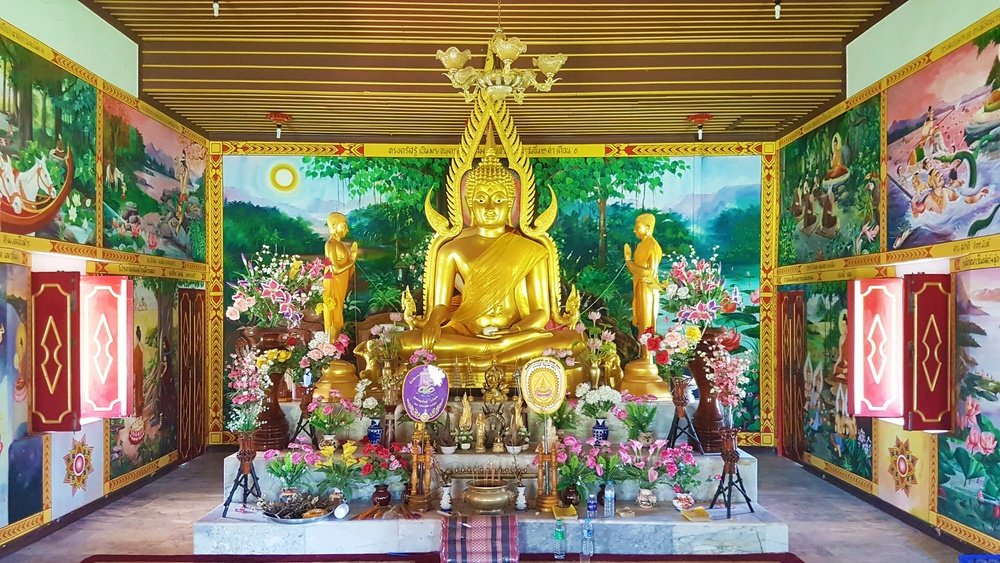India, the land where Lord Buddha attained enlightenment, continues to be a significant spiritual destination for millions of Buddhists around the world. With its ancient monasteries, sacred pilgrimage sites, and diverse Buddhist communities, India celebrates a wide array of vibrant and meaningful festivals rooted in Buddhist tradition. These events are not just religious observances — they are cultural experiences that bring together faith, devotion, and tradition. In this article, we explore some of the major Buddhist festivals in India, from the widely celebrated Vesak (Buddha Purnima) to the colorful Tibetan New Year, Losar.
1. Vesak (Buddha Purnima): Honoring the Enlightened One
Vesak, also known as Buddha Purnima, is the most important of all Buddhist festivals in India. Celebrated on the full moon day in April or May, it marks three monumental events in the life of Buddha — his birth, enlightenment, and Mahaparinirvana (death).
Devotees gather in large numbers at Bodh Gaya, Sarnath, and Kushinagar — sites closely linked to Buddha’s life — to offer prayers, meditate, chant sutras, and participate in community services. Monasteries are beautifully decorated, butter lamps are lit, and acts of generosity are encouraged. The peaceful aura and spiritual significance of Vesak make it a truly transformative experience for all who attend.
2. Losar: Tibetan New Year with a Spiritual Touch
Losar, the Tibetan New Year, is one of the most vibrant and culturally rich Buddhist festivals in India, especially celebrated in regions like Ladakh, Sikkim, and Dharamshala. Held between February and March, Losar is not only a time for spiritual renewal but also for family reunions, feasting, and traditional performances.
Monasteries conduct special rituals to drive away evil spirits and bring good fortune. Monks perform Cham dances wearing ornate masks and costumes, while locals prepare traditional foods like guthuk (noodle soup). The atmosphere during Losar is full of joy and devotion, offering travelers a fascinating glimpse into Tibetan Buddhist life.
3. Hemis Festival: A Cultural Explosion in Ladakh
Held in June or July at the Hemis Monastery, the Hemis Festival honors Guru Padmasambhava, the revered figure who introduced Buddhism to Tibet. It is among the most famous Buddhist festivals in India and attracts thousands of tourists every year.
The central highlight is the Cham dance, performed by monks in vivid costumes and masks, dramatizing the triumph of good over evil. The courtyard of Hemis Monastery comes alive with music, rituals, and the beating of traditional drums and horns. The festival is a spiritual and visual spectacle set against the breathtaking Himalayan backdrop.
4. Saka Dawa: A Month of Merit and Compassion
Saka Dawa is celebrated in the fourth month of the Tibetan lunar calendar, typically falling in May or June. It commemorates the birth, enlightenment, and death of Lord Buddha, making it one of the holiest months in Tibetan Buddhism.
During Saka Dawa, Tibetan Buddhist communities in Ladakh, Sikkim, and other Himalayan regions perform religious rituals, make offerings, and engage in charitable acts. Pilgrims often circumambulate stupas, chant prayers, and light butter lamps. This festival is a call to live mindfully, embodying the teachings of Buddha through action and thought.
5. Lhabab Duchen: Buddha’s Return to Earth
Lhabab Duchen is a Tibetan Buddhist festival celebrated in October or November. It commemorates Buddha’s descent from the Tushita Heaven after teaching his mother the Dharma. This is one of the four great festivals in the Buddhist calendar and holds deep spiritual meaning.
In India, it is celebrated in monasteries across Sikkim, Himachal Pradesh, and Ladakh. Devotees mark the day by participating in prayer gatherings, lighting lamps, and engaging in acts of merit. The festival reinforces the Buddha’s compassion and commitment to spreading his teachings for the benefit of all beings.
6. Kalachakra Festival: The Wheel of Time and Wisdom
Though not held annually, the Kalachakra Festival is one of the most spiritually profound Buddhist festivals in India. Often led by the Dalai Lama himself, it involves several days of teachings, initiations, and the creation of a sacred sand mandala representing the universe.
The Kalachakra Festival is usually held in Bodh Gaya, drawing thousands of monks, pilgrims, and international visitors. It is considered an advanced spiritual event focused on world peace, inner transformation, and the cyclical nature of time and existence.
7. Kagyed Dance Festival: Rituals of Renewal
Celebrated in early December in Sikkim, particularly at monasteries like Enchey and Rumtek, the Kagyed Festival is a spiritual ceremony featuring ritual Cham dances that ward off evil and invite blessings for the new year.
The masked dances are accompanied by chanting, music, and elaborate performances that illustrate Buddhist teachings and folklore. The festival concludes with the burning of effigies, symbolizing the destruction of negative forces and purification of the environment and the soul.
Conclusion
From the serene meditations of Vesak to the high-energy performances of Hemis and Losar, Buddhist festivals in India offer a beautiful blend of devotion, culture, and community. These sacred celebrations are windows into a way of life that emphasizes compassion, mindfulness, and spiritual awakening.
Attending these festivals not only enriches your understanding of Buddhist traditions but also offers a rare chance to witness the timeless wisdom of the Buddha in action. Whether you’re a pilgrim or a curious traveler, exploring these festivals will leave you inspired and deeply moved.
